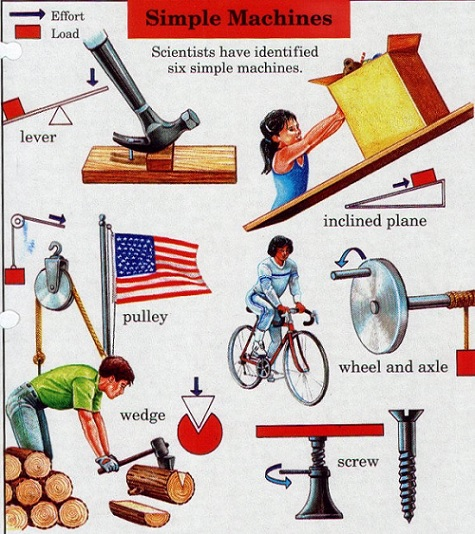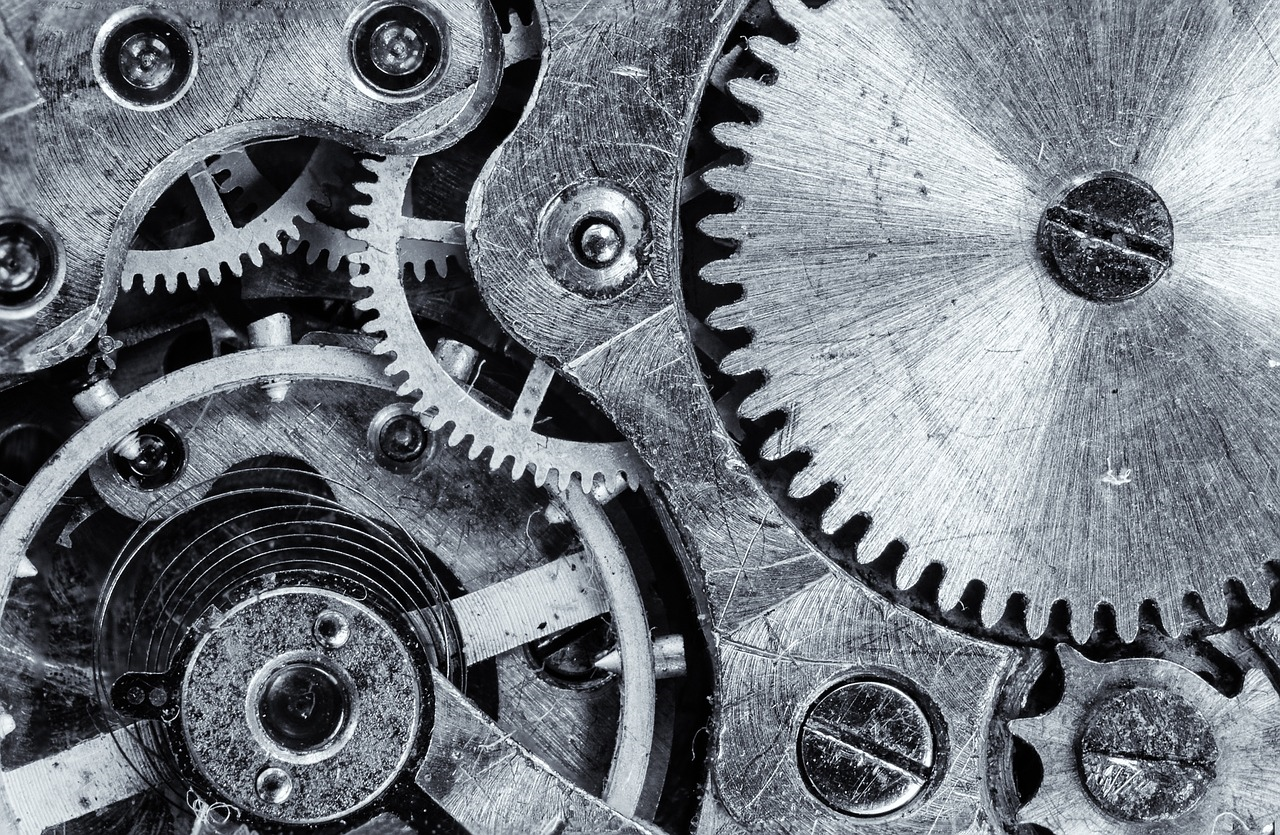Unit 15: Machines
Unit 15: Machines

Unit 15: Machines

Unit 15: Machines
Throughout history, humans have developed several devices to make work easier. The most notable of these are known as the 'six simple machines': the wheel and axle, the lever, the inclined plane, the pulley, the screw, and the wedge, although the latter three are actually just extensions or combinations of the first three.
Because work is defined as force acting on an object in the direction of motion, a machine makes work easier to perform by accomplishing one or more of the following functions, according to Jefferson Lab:
- transferring a force from one place to another,
- changing the direction of a force,
- increasing the magnitude of a force, or
- increasing the distance or speed of a force.
Simple machines are devices with no, or very few, moving parts that make work easier. Many of today's complex tools are just combinations or more complicated forms of the six simple machines, according to the University of Colorado at Boulder. For instance, we might attach a long handle to a shaft to make a windlass, or use a block and tackle to pull a load up a ramp. While these machines may seem simple, they continue to provide us with the means to do many things that we could never do without them.
Work is performed by applying a force over a distance. These simple machines create a greater output force than the input force; the ratio of these forces is the mechanical advantage of the machine. All six of the simple machines have been used for thousands of years, and the physics behind several of them were quantified by Archimedes. These machines can be used together to create even greater mechanical advantage, as in the case of a bicycle.
Lever
A lever is a simple machine that consists of a rigid object (often a bar of some kind) and a fulcrum (or pivot). Applying a force to one end of the rigid object causes it to pivot about the fulcrum, causing a magnification of the force at another point along the rigid object. There are three classes of levers, depending on where the input force, output force, and fulcrum are in relation to each other. Baseball bats, seesaws, wheelbarrows, and crowbars are types of levers.
Wheel & Axle
A wheel is a circular device that is attached to a rigid bar in its center. A force applied to the wheel causes the axle to rotate, which can be used to magnify the force (by, for example, having a rope wind around the axle). Alternately, a force applied to provide rotation on the axle translates into rotation of the wheel. It can be viewed as a type of lever that rotates around a center fulcrum. Ferris wheels, tires, and rolling pins are examples of wheels & axles.
Inclined Plane
An inclined plane is a plane surface set at an angle to another surface. This results in doing the same amount of work by applying the force over a longer distance. The most basic inclined plane is a ramp; it requires less force to move up a ramp to a higher elevation than to climb to that height vertically.
The wedge is often considered a specific type of inclined plane.
Wedge
A wedge is a double-inclined plane (both sides are inclined) that moves to exert a force along the lengths of the sides. The force is perpendicular to the inclined surfaces, so it pushes two objects (or portions of a single object) apart. Axes, knives, and chisels are all wedges. The common 'door wedge' uses the force on the surfaces to provide friction, rather than separate things, but it's still fundamentally a wedge.
Screw
A screw is a shaft that has an inclined groove along its surface. By rotating the screw (applying a torque), the force is applied perpendicular to the groove, thus translating a rotational force into a linear one. It is frequently used to fasten objects together (as the hardware screw & bolt does), although Babylonians developed a 'screw' that could elevate water from a low-lying body to a higher one (which later came to be known as Archimedes' screw).
Pulley
A pulley is a wheel with a groove along its edge, where a rope or cable can be placed. It uses the principle of applying force over a longer distance, and also the tension in the rope or cable, to reduce the magnitude of the necessary force.
Complex systems of pulleys can be used to greatly reduce the force that must be applied initially to move an object.
Vocabulary
Lesson Reading

